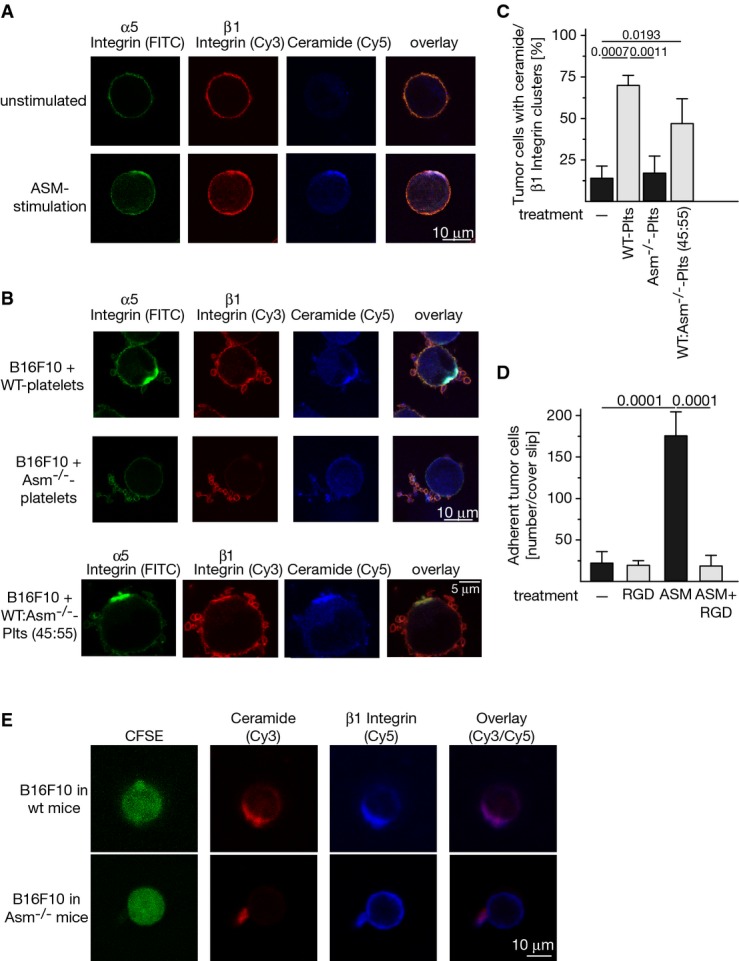Figure 5.

- A–C 1 × 105 B16F10 cells were incubated with (A) 1 U/ml purified acid sphingomyelinase (ASM) or (B) 5 × 107 wild-type (WT), Asm-deficient (Asm−/−) platelets (Plts), or a mixture of 45:55 wild-type:Asm-deficient platelets. Cells were fixed with 2% paraformaldehyde for 15 min and stained with fluorescein isothiocyanate (FITC)-coupled anti-α5 integrin, Cy3-labeled anti-β1 integrin, and Cy5-labeled anti-ceramide antibodies. Samples were analyzed by confocal microscopy. Shown are representative examples from four independent experiments (A, B) or the quantitative analysis of cells positive for ceramide/β1 integrin clusters from at least 100 cells/sample (C). Given is the mean ± SD, n = 4, ANOVA followed by Tukey's multiple comparisons test. P-values are indicated.
- D ASM-induced B16F10 tumor cell adhesion to fibronectin-coated cover slips is abrogated by the inhibition of integrins with RGD peptides. Shown is the mean ± SD of the number of cells adherent to the cover slip. Statistical significance was determined by ANOVA followed by Tukey's multiple comparisons test. P-values are indicated.
- E Intravenous injection of CFSE-labeled B16F10 cells into wild-type mice results in formation of ceramide-enriched domains that contain β1 integrin clusters on tumor cells in vivo, while injection of tumor cells into Asm-deficient mice does not result in ceramide and integrin clustering. Please note that the cell in the lower panel still binds a platelet. Shown are representative results from four independent experiments each.
